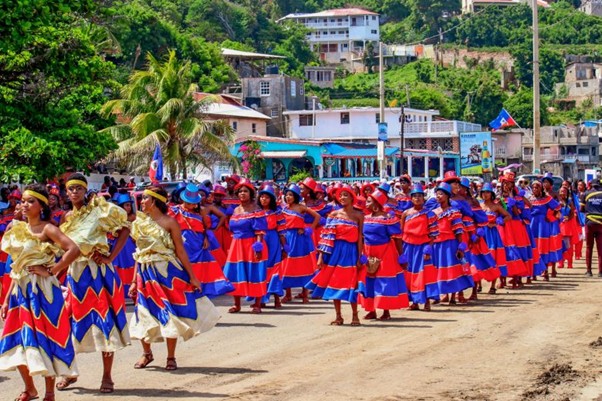Every year on May 18, Haitians across the globe come together to celebrate Haitian Flag Day—a day that honours the birth of a nation forged in the fires of revolution and the creation of a flag that symbolizes independence, resilience, and the relentless fight for freedom. More than just a national holiday, Haitian Flag Day is a powerful reminder of Haiti’s proud legacy as the first Black republic and the first country to abolish slavery through a successful revolution.
The Birth of the Haitian Flag
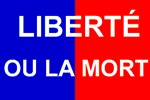 In Petite Rivière de l’Artibonite, Jean-Jacques Dessalines, chief of the black rebels, and Alexandre Pétion, leader of the mulattos, decided in February 1803 to stop fighting alongside the French. During the Arcahaie Congress, Dessalines, on May 18, 1803, removed the white band from the French flag – which was used in Haiti during the French rule and thereby created the first Haitian flag, symbol of the alliance of blacks and mulattos in their fight for freedom. Dessalines, who ordered that the phrase “Freedom or Death” be inscribed on the flag, is soon nominated General of the Insurrection. A relative of his, Catherine Flon, is entrusted with the task of sewing back together the blue (hoist side) and red bands of fabric to form the new Haitian flag
In Petite Rivière de l’Artibonite, Jean-Jacques Dessalines, chief of the black rebels, and Alexandre Pétion, leader of the mulattos, decided in February 1803 to stop fighting alongside the French. During the Arcahaie Congress, Dessalines, on May 18, 1803, removed the white band from the French flag – which was used in Haiti during the French rule and thereby created the first Haitian flag, symbol of the alliance of blacks and mulattos in their fight for freedom. Dessalines, who ordered that the phrase “Freedom or Death” be inscribed on the flag, is soon nominated General of the Insurrection. A relative of his, Catherine Flon, is entrusted with the task of sewing back together the blue (hoist side) and red bands of fabric to form the new Haitian flag
 On November 18, 1803, French troops capitulated in Vertières; Haiti became independent. On January 1, 1804 the generals of the revolution decide to change the flag so that the bands were now horizontal. This was the first flag of the free and independent republic. This new bi-colored flag was confirmed by article 192 of the Constitution of 1843.
On November 18, 1803, French troops capitulated in Vertières; Haiti became independent. On January 1, 1804 the generals of the revolution decide to change the flag so that the bands were now horizontal. This was the first flag of the free and independent republic. This new bi-colored flag was confirmed by article 192 of the Constitution of 1843.
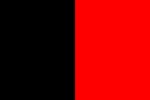 On October 8, 1804, Dessalines proclaimed himself Emperor and took the name Jacques I. On May 20, 1805 he adopted a new flag of two vertical bands; one black, for Death, and one red, for Freedom.
On October 8, 1804, Dessalines proclaimed himself Emperor and took the name Jacques I. On May 20, 1805 he adopted a new flag of two vertical bands; one black, for Death, and one red, for Freedom.
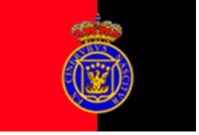 After the assassination of Dessalines at Pont Rouge on October 17, 1806, the country was divided in two for 14 years; the north ruled by Henri Christophe and the south and west ruled by Alexandre Pétion. Pétion immediately reverted to the blue and red flag of 1804, to which he added the inscription “L’union fait la force” (Strength in Unity). At the centre, the coat of arms of the Republic, adorned with the Phrygian hat (liberty cap), is placed on a white square background. This flag was hoisted at the National Palace for 158 years, until 1964.
After the assassination of Dessalines at Pont Rouge on October 17, 1806, the country was divided in two for 14 years; the north ruled by Henri Christophe and the south and west ruled by Alexandre Pétion. Pétion immediately reverted to the blue and red flag of 1804, to which he added the inscription “L’union fait la force” (Strength in Unity). At the centre, the coat of arms of the Republic, adorned with the Phrygian hat (liberty cap), is placed on a white square background. This flag was hoisted at the National Palace for 158 years, until 1964.
 On December 27, 1806 General Henri Christophe becomes president and is recognized in the North, North West, and in 1807, Artibonite Departments. On March 28, 1811, he proclaims himself king and takes the name Henri I (1811-1820). The self-made monarch keeps the colors of the imperial flag of the Kingdom of the North (1805), but changes it slightly; red in the hoist and black in the fly with, at the center, a shield with a phoenix under gold five-pointed stars, all on a blue background; the shield bears a crown and the Latin inscription ‘Ex Cineribus Nascitur’ (From the ashes we will arise). In 1818, Henri and his kingdom are vanquished by Alexandre Pétion’s conquest of the North. Pétion, who had been proclaimed president on March 19, 1807, imposes the horizontal blue and red flag on the North. On October 8, 1920 he is succeeded by Jean-Pierre Boyer who maintains the same flag.
On December 27, 1806 General Henri Christophe becomes president and is recognized in the North, North West, and in 1807, Artibonite Departments. On March 28, 1811, he proclaims himself king and takes the name Henri I (1811-1820). The self-made monarch keeps the colors of the imperial flag of the Kingdom of the North (1805), but changes it slightly; red in the hoist and black in the fly with, at the center, a shield with a phoenix under gold five-pointed stars, all on a blue background; the shield bears a crown and the Latin inscription ‘Ex Cineribus Nascitur’ (From the ashes we will arise). In 1818, Henri and his kingdom are vanquished by Alexandre Pétion’s conquest of the North. Pétion, who had been proclaimed president on March 19, 1807, imposes the horizontal blue and red flag on the North. On October 8, 1920 he is succeeded by Jean-Pierre Boyer who maintains the same flag.
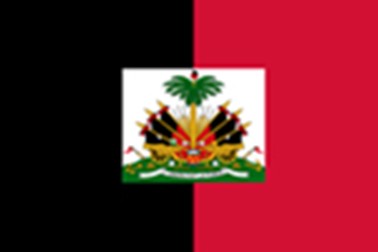 In 1957, François Duvalier, ‘Papa Doc’, was elected President, and in 1960 he seized total power. In 1963, he established a single party system and a new Constitution was adopted on May 25, 1964. The new Constitution returned to the black and red flag, although this time the coat of arms of the Republic remained. This flag became official on June 21, 1964. On April 21, 1971 Duvalier died and was replaced by his son Jean-Claude, who was proclaimed ‘President for Life’. Following a popular uprising, Jean-Claude was removed from office in February 1986.
In 1957, François Duvalier, ‘Papa Doc’, was elected President, and in 1960 he seized total power. In 1963, he established a single party system and a new Constitution was adopted on May 25, 1964. The new Constitution returned to the black and red flag, although this time the coat of arms of the Republic remained. This flag became official on June 21, 1964. On April 21, 1971 Duvalier died and was replaced by his son Jean-Claude, who was proclaimed ‘President for Life’. Following a popular uprising, Jean-Claude was removed from office in February 1986.
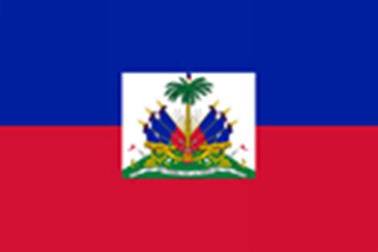 On February 17, 1986, 10 days after the departure of Jean-Claude Duvalier, the Haitian nation reverted to the blue and red flag, which was ratified a year later by the official adoption of the March 29, 1987 Constitution.
On February 17, 1986, 10 days after the departure of Jean-Claude Duvalier, the Haitian nation reverted to the blue and red flag, which was ratified a year later by the official adoption of the March 29, 1987 Constitution.
A Celebration with Purpose
Across Haiti and within Haitian communities worldwide, Flag Day is celebrated with parades, music, dancing, speeches, and ceremonies. Schools teach children the history of the flag, artists perform in honour of national heroes, and the red-and-blue colors fly proudly everywhere. It’s a day of joy and reflection—a moment to celebrate cultural pride and historical triumph. To mark the 222nd Anniversary of the Haitian flag, official celebrations this year will be held in the city of Cap-Haitien. The theme “Yon sèl drapo, Yon sèl pèp, Yon sèl nasyon,” (One flag, One people, One Nation) is intended as a call for national unity, solidarity and collective awareness.
Haitian Flag Day is more than just a patriotic celebration—it’s a reminder of what is possible when a people come together with courage and vision. It speaks to Haiti’s place in world history as a beacon of resistance, freedom, and self-determination.
‘L’Union Fait La Force’ — Unity Makes Strength.
History of the Haitian flag courtesy of Embassy of Haiti.
https://www.haiti.org/flag-and-coat-of-arms
Photo: Celebrations in Cap-Haitien 2022. Photo: Oldjy Francois for The Haitian Times

